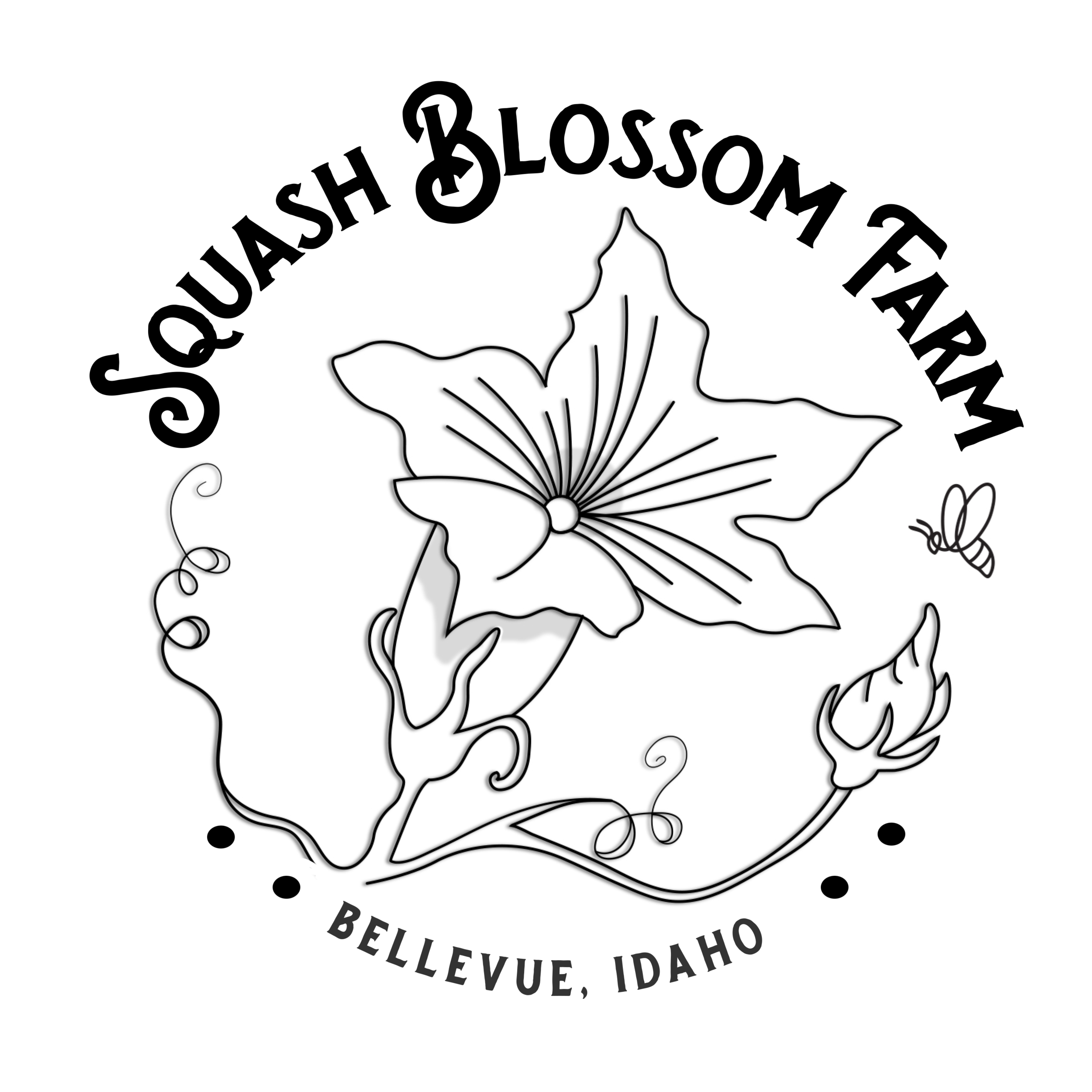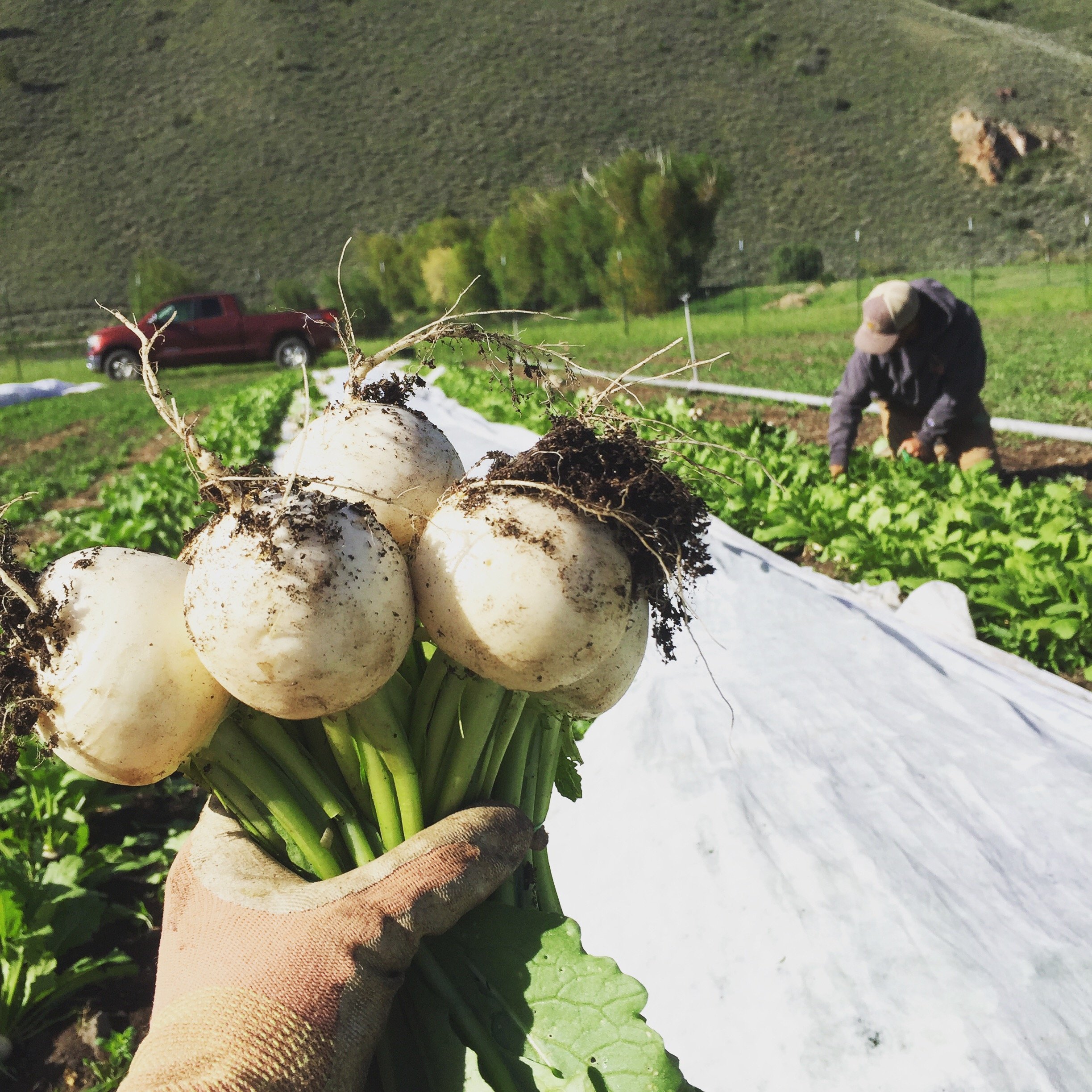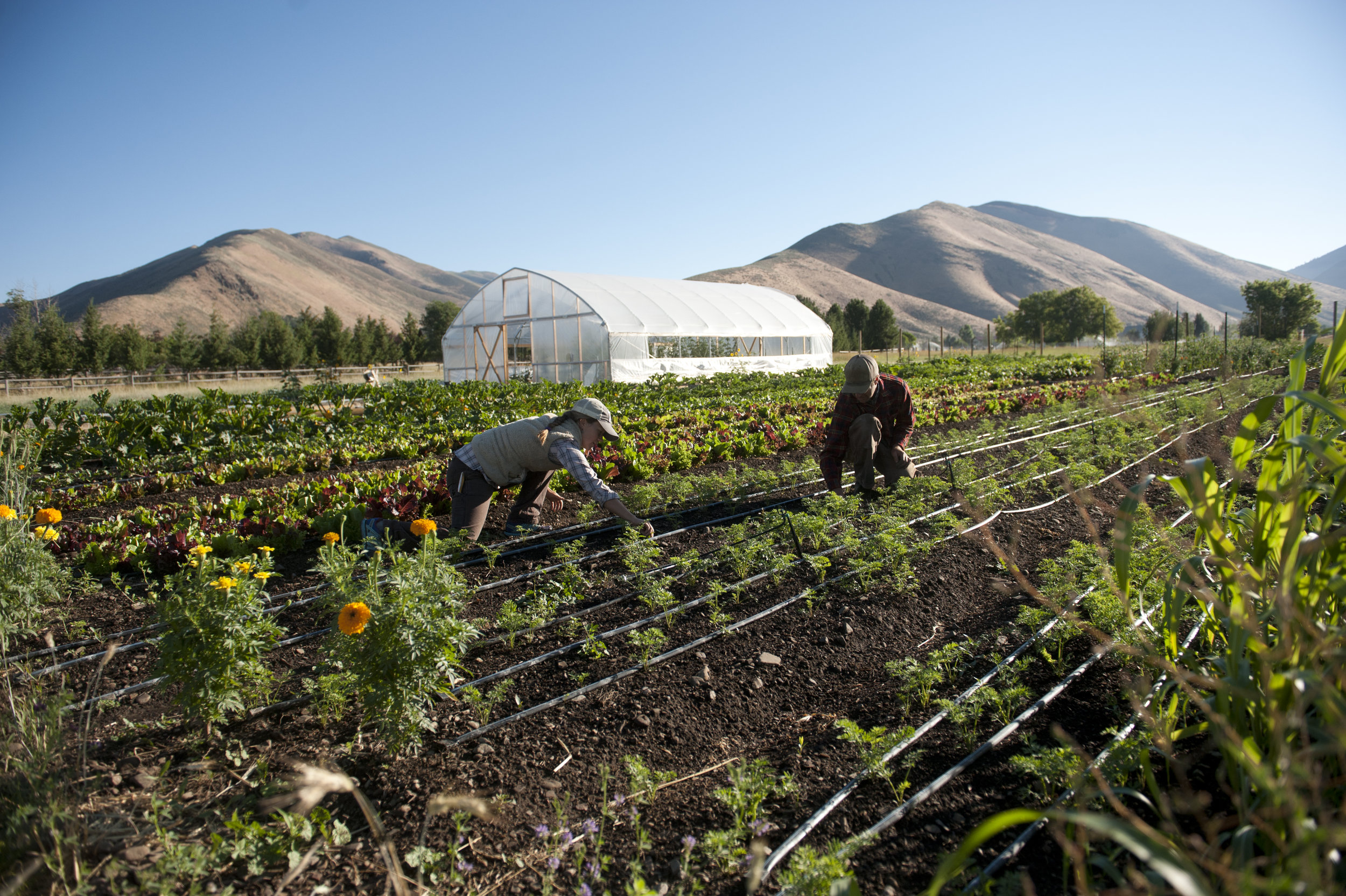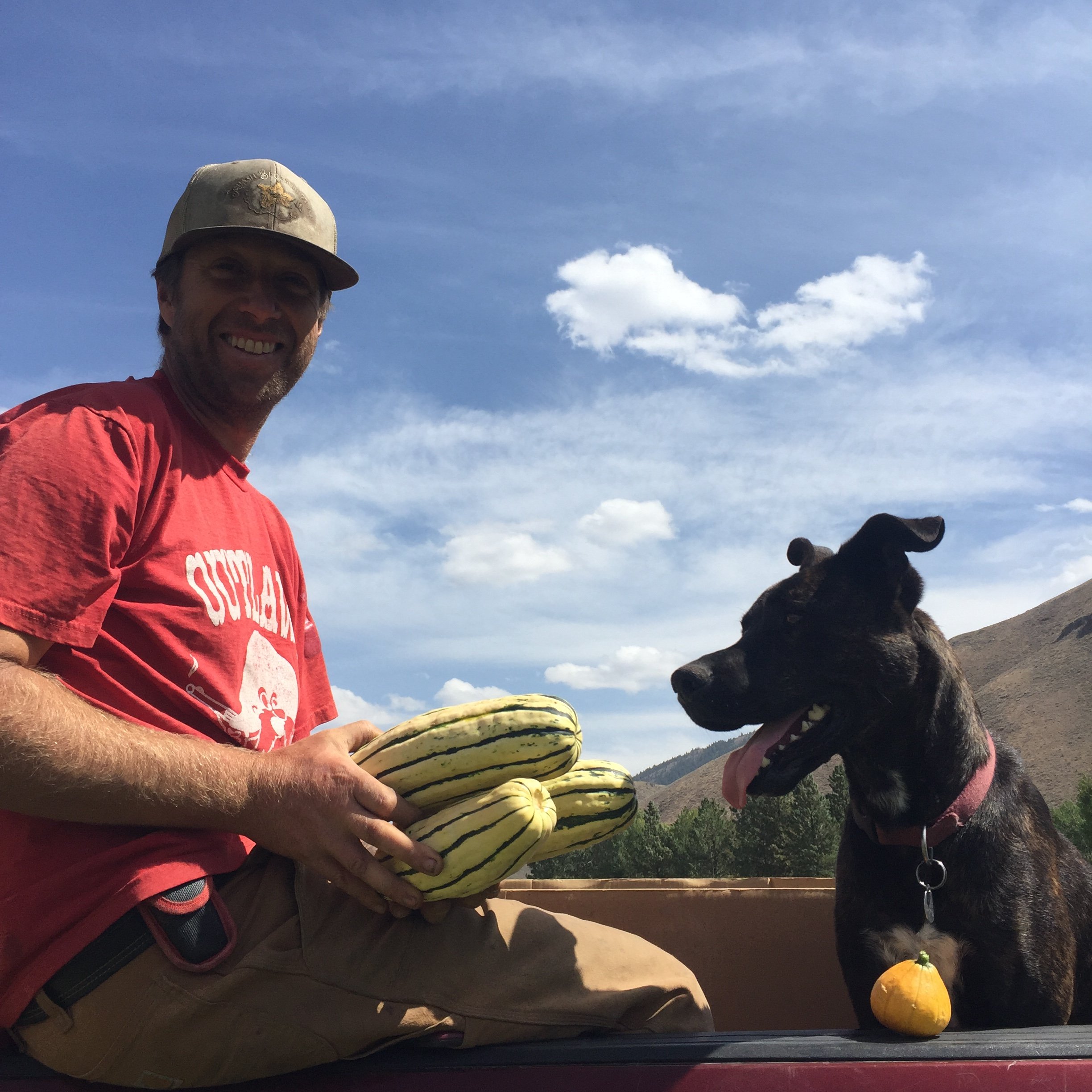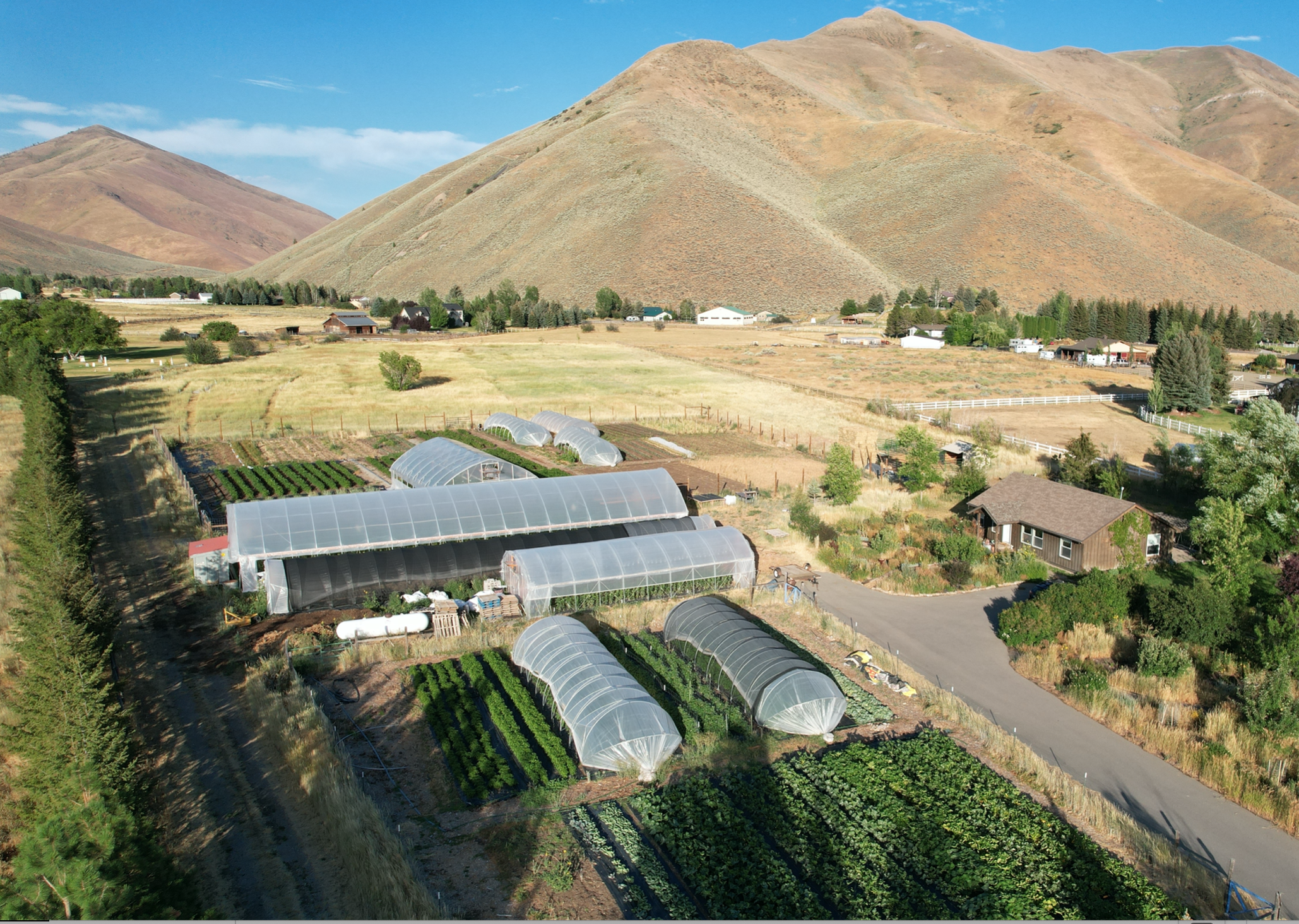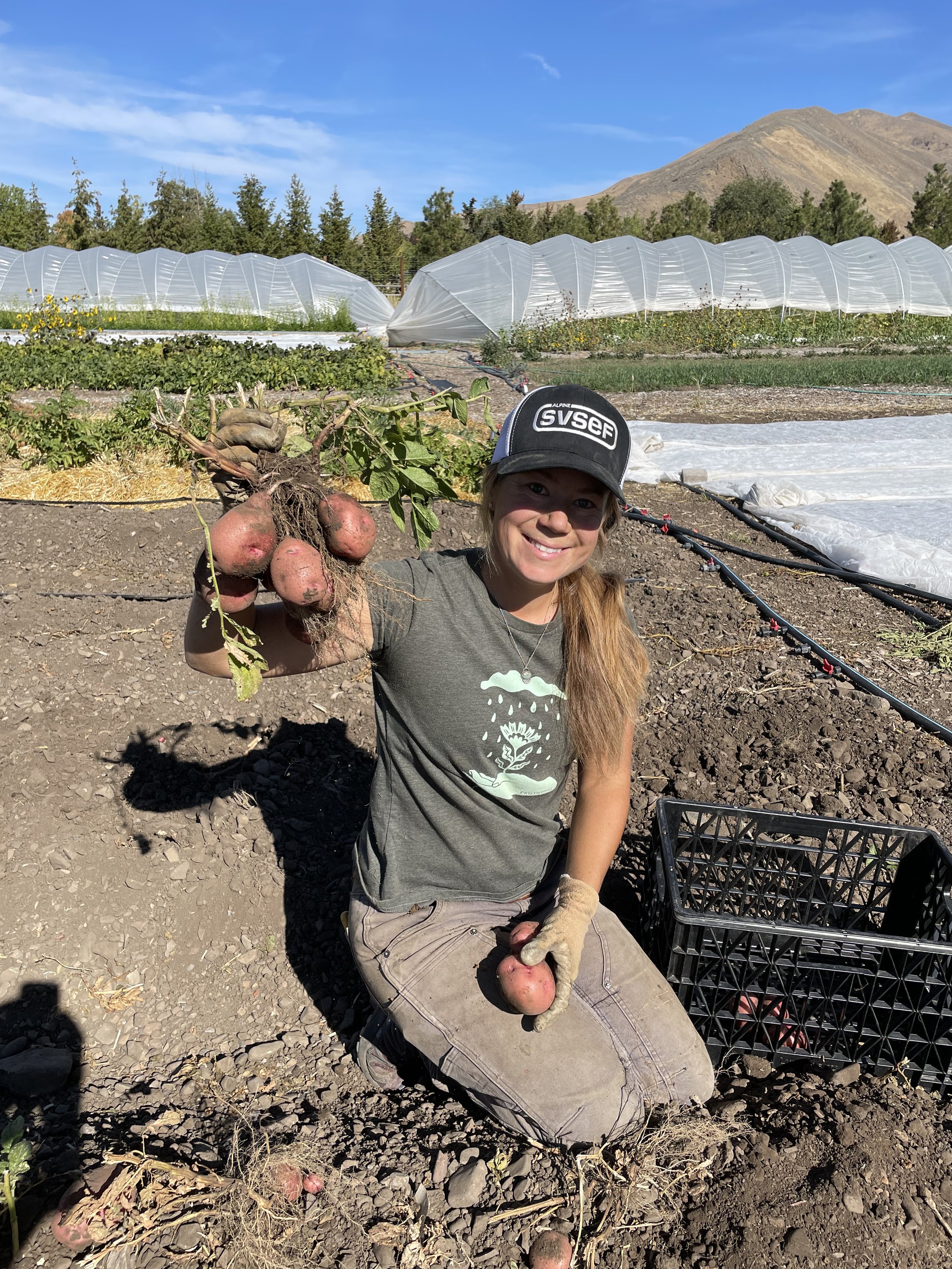Our Farm
Our farm and home sit on 7 acres in the mouth of Muldoon Canyon, just a few blocks off of Main Street in Bellevue, Idaho. We live in a high-mountain desert that sees almost no rain throughout the entire growing season, and are fortunate to have a water right on our property that makes farming possible.
On our home property, we grow 1 acre of mixed vegetables using bio-intensive methods that allow us to produce high yields in a small space while prioritizing resource-conscious techniques. As of the 2021season, we have added a new leased property into our management, just a couple miles out the canyon from our home farm on the Eedaho Ranch. At over 6 acres, this additional space has allowed us to continue high intensity vegetable production on 2-3 acres while establishing larger-scale cover crop rotations to help with soil fertility and weed management. The Eedaho Ranch property also provides supplemental space for our sheep grazing rotation.
While we are not certified USDA Organic, our practices surpass the minimum requirements for certification, and we never use any chemical inputs on our farm.
We are confident that we are employing the best practices for the health of our land and the health of the customers who enjoy our produce, and we invite you down to see where your food comes from first-hand!
We grow on a minimal till, permanent bed system. This means that our garden beds are the same each year, instead of being rebuilt by a tractor every season. We use low-impact methods of aerating our soil such as broad forking and harrowing with our BCS walk-behind tractor. These methods help to mitigate soil compaction and promote healthy, complex soil structure.
Soil fertility is the key to healthy, productive crops. We add compost, vermicompost (worm castings), and other natural amendments every season based on soil tests. We also work to incorporate cover crops into our production beds as frequently as possible, allowing cover crop material to break down in place and add organic matter to our soil.
We utilize various heated and unheated covered growing spaces including caterpillar tunnels, a 50ft moveable hoophouse (unheated) and 2 heated hoophouses (100ft and 50ft) . These protected areas serve many purposes: to extend our short growing season an extra month on each end, to provide a warm space for vegetable starts in the early season before it is warm enough for plants to go in the ground, and to create an ideal growing condition in the peak season for heat loving plants like tomatoes and cucumbers.
Beyond the vegetable gardens…
We graze a small flock of sheep on approximately 4 acres of pasture using rotational grazing. This means they are moved from one small area of the field to another every few days using portable fencing. They eat the grass down, trample and break down the soil surface with their hooves, and drop manure, then move to another spot. This leaves the grass to recover and helps build more healthy soil. Moving every couple days, our flock makes it around the whole pasture in one season.
We keep approximately 20 laying hens, mostly for eggs for our family. In the summer, they rotate around our pasture with the sheep, helping to scratch the soil and add manure.
We also have 2-4 bee hives (depending on the year). Bee keeping has proven challenging with our short summers and harsh winters, but we honor and value the work of all pollinators as part of the holistic ecosystem of our farm. Plus, we enjoy working with them and can’t resist the delicious bounty of fresh honey!
We have a small orchard that we are working to transition into a permaculture edible and medicinal garden.
Fight the lawn! As far as we’re concerned, lawn is an atrocious waste of space and water, and unfortunately has become a default for most Americans that sucks up millions of gallons of water and chemicals nation-wide each year. We are slowly working to turn the parcels of lawn on our property to native, drought tolerant gardens that will ultimately use very little water and thrive in our environment. To transition our lawns, we sheet mulch using layers of cardboard, straw, and compost. If you are interested in creating beautiful gardens that are appropriate for our environment, we are happy to share our knowledge!
VISIT THE FARM!
We would love for you to see where your food comes from. Please contact Sara to arrange a visit for you and your family.
We are open to volunteers and love to send helpers home with healthy treats! Please understand, however, that we are a high-efficiency working farm. Because of this, we must be selective and can only take on volunteers with a good work ethic and positive attitude!
